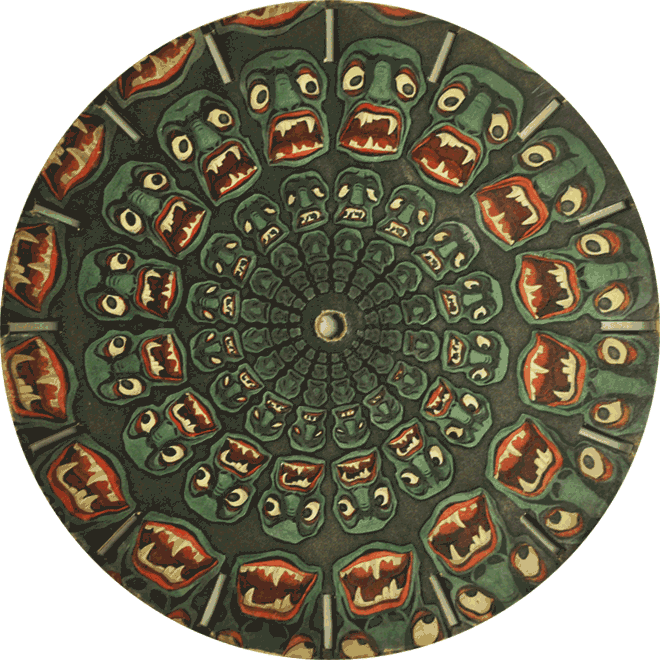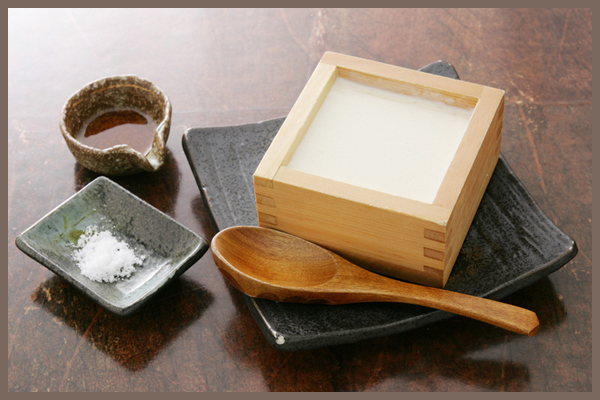:::::::::::::::::::::::::::::::::::::::::::::::::::::::::::::::::::::::::::::::::::::::::::::::::::::::::::::::::::::::::::::::::::::::::::::::::::::::::::::::::::::::::::::::::::
Nihon Ryooiki, Nihon Ryōiki 日本霊異記 Nihon Ryoiki
Ghostly Strange Records from Japan
Record of Miraculous Events in Japan
by Kyookai 景戒 (きょうかい/けいかい) Kyokai - Keikai, priest of Yakushi-Ji in the Nara period

source : plaza.rakuten.co.jp/caphiro
仏教」仏典の鬼(日本霊異記)
- quote -
Nihon Ryōiki 日本霊異記
is an early Heian period setsuwa collection. Written by Kyōkai between 787 and 824, it is Japan's oldest collection of Buddhist 説話 Setsuwa sermons .
It is three volumes in length.
- - - - - Title
Commonly abbreviated as Nihon Ryōiki, which means "Ghostly Strange Records from Japan," the full title is
Nihonkoku Genpō Zen'aku Ryōiki (日本国現報善悪霊異記).
It may also be read as Nihon Reiiki 日本霊記 .
The book has been translated into English under the title Miraculous Stories from the Japanese Buddhist Tradition, but this does not represent a literal translation of the Japanese title.
- - - - - Contents
The work is composed of three parts contained within three volumes. Each volume begins with a preface, and the final volume contains an epilogue. There are a total of 116 tales all dealing with Buddhist elements. There are also a total of nine poems.
- - - More in the WIKIPEDIA !

2 volumes by 中田祝夫 Tanaka Norio
Kyokai, Keikai 景戒 (きょうかい / けいかい)
(生没年不詳)は、奈良時代の薬師寺の僧。
日本最初の説話集『日本霊異記』の著者として知られる。
- - - More in the WIKIPEDIA !
..............................................................................................................................................
- and its modern version by 水木しげる Mizuki Shigeru
Record of Miraculous Events in Japan

. Shigeru Mizuki (水木 しげる) Mizuki Shigeru .
(1922 - 2015)
:::::::::::::::::::::::::::::::::::::::::::::::::::::::::::::::::::::::::::::::::::::::::::::::::::::::::::::::::::::::::::::::::::::::::::::::::::::::::::::::::::::::::::::::::::
Miraculous Stories from the Japanese Buddhist Tradition:
The Nihon Ryoiki of the Monk Kyokai
By Kyoko Motomuchi Nakamura

----- Read the details here :
- source : books.google.co.jp -
..............................................................................................................................................
Record of Miraculous Events in Japan: The Nihon ryoiki
By Keikai - translated by Burton Watson

- source : books.google.co.jp -
:::::::::::::::::::::::::::::::::::::::::::::::::::::::::::::::::::::::::::::::::::::::::::::::::::::::::::::::::::::::::::::::::::::::::::::::::::::::::::::::::::::::::::::::::::
To become a special 鬼 Oni demon, you have to make your head all red.
Sometimes the Oni has a hot iron ring on the head, sometimes he appears as a 番人 watchman.
.......................................................................
Once a young fox shape-shifted into the wife of a certain man and enjoyed the time with him. But when the dog barked, he showed his real features and run away as fast as he could.
:::::::::::::::::::::::::::::::::::::::::::::::::::::::::::::::::::::::::::::::::::::::::::::::::::::::::::::::::::::::::::::::::::::::::::::::::::::::::::::::::::::::::::::::::::

本当はこわい仏教むかし話 マンガでよむ『日本霊異記』
Terrifying Buddhist Stories of the Nihon Ryoiki - told as Manga
:::::::::::::::::::::::::::::::::::::::::::::::::::::::::::::::::::::::::::::::::::::::::::::::::::::::::::::::::::::::::::::::::::::::::::::::::::::::::::::::::::::::::::::::::::
.......................................................................... Aichi 愛媛県 ......................................
少子部蜾蠃 Chiisakobe no Sugaru once invited a kaminari 雷 thunderbolt on request
of 雄略天皇 Emperor Yuryaku.
The emperor wanted to see a Kaminari close up, so Chiisakobe whent up a hill in Asuka, grabed a thunderbolt and showed it to the Emperor. It looked like a huge flickering serpent and the Emperor ordered Sugaru to bring it back immediately.
After Sugaru's death a stone memorial was erected in the place where it had happened. The inscription read
取雷栖軽之墓 Grave of Sugaru who grabed a thunderbolt.
The Kaminari deity got angry and tried to hit the stone, but was caught instead.
少子部 螺 (ちいさこべ すがる) Chiisakobe Sugaru
----- Read the details here :
- source : books.google.co.jp -
Emperor Yūryaku (雄略天皇 Yūryaku-tennō) was the 21st emperor of Japan ...
The sword at the Inariyama Kofun (Thunderbolt Mountain Kofun) is related to him.
Inariyama burial-mound sword (稲荷山古墳出土鉄剣 inariyama kofun shutsudo tekken)
- - - More in the WIKIPEDIA !
.......................................................................
At the time of 敏達天皇 Emperor Bidatsu a farmer once went to his fields to drain the water off. But suddenly he found himself in a huge storm and rain. So he rested under a tree, but a thunderbolt hit. The Thunderbolt had the shape of a child and said:
"If you save me, I will give you a child."
So the farmer let the Thunderbolt go back to heaven and his wife became pregnant.
Emperor Bidatsu (敏達天皇 Bidatsu-tennō, 538 – 14 September 585) was the 30th emperor of Japan ...
- - - More in the WIKIPEDIA !
. thunder 雷 kaminari - introduction .
Zur Zeit des Bidatsu Tennō 敏達天皇, in der Provinz Owari 尾張国, ... story in German
.......................................................................... Gifu 岐阜県 ......................................
According to the Nihon Ryoki there is a family with a record dating back to
Mino no Kitsune 美濃の狐 The Fox of Mino.
There are supposed to be about 10 families with this background.
----- Read the details here :
三野狐 Mino no Kitsune, a woman of extraordinary strength . ..
- source : books.google.co.jp -
.......................................................................... Hyogo 兵庫県 ......................................
In 但馬国 Harima no Kuni (Northern part of Hyogo)
A young girl was once carried away by 鷲 an eagle. Many years later she was found in 丹波国加佐郡 the Kasa district of Tanba and could finally return home to her parents.
.......................................................................... Kyoto 京都府 ......................................
tooru no daijin no rei 融の大臣の霊 / Tôru daijin / The Minister Toru
Most of the stories of ghosts are about people becoming ghosts and appearing as a skull.
One of the oldest records is the Nihon Ryooiki 日本霊異記 Nihon Ryoiki.
宇多院 Emperor Uda (867 - 931) made an official visit to 河原院 Kawara no In (the official residence of Minamoto no Tooru 源融 Toru (822 - 895).
The late owner of this Kawara residence, Toru, appeared clad in 衣冠 formal robes as a ghost to greet the visitor.
Kawara no Sadaijin 河原左大臣 - Poet and statesman
- reference - Minamoto no Toru -
. dokuro 髑髏と伝説 Legends about the Skull .
- Introduction -
.......................................................................... Nara 奈良県 ......................................
- quote -
Gagoze ガゴゼ
Gagoze is a horrible-looking ghost who haunts the ancient temple Gango-ji in Nara prefecture. His story dates back to the Asuka period (550-710 CE). He is first depicted in illustration in Toriyama Sekien’s Gazu Hyakki Yakko, and he is said to take the appearance of a demon in monk’s garb.
His story says that during the time of Emperor Bidatsu, in old Owari province (now Nagoya in Aichi prefecture), lightning struck the ground near an farmer’s house. From the lightning emerged a thunder god in the form of a young boy, and the farmer ran outside with a stick to kill the boy. The boy pleaded with the farmer to spare his life, and promised that he would return the deed by giving the farmer and his family a young boy as strong as the thunder god. The farmer agreed, and allowed the thunder god to return to the sky.
Sure enough, the farmer’s wife soon bore a child, and the child was as strong as a thunder god! However, the child was born with a snake wrapped around his head, with the head and tail going down the back like a ponytail. When the boy turned 10, he had grown so strong and proud that he challenged a member of the imperial family to a contest of strength and won. .....
- source : Matthew Meyer -
. Gangooji 元興寺 Gango-ji .
:::::::::::::::::::::::::::::::::::::::::::::::::::::::::::::::::::::::::::::::::::::::::::::::::::::::::::::::::::::::::::::::::::::::::::::::::::::::::::::::::::::::::::::::::::
. . . CLICK here for Photos !
- reference : nichibun yokai database -

日本霊異記・宇治拾遺物語
:::::::::::::::::::::::::::::::::::::::::::::::::::::::::::::::::::::::::::::::::::::::::::::::::::::::::::::::::::::::::::::::::::::::::::::::::::::::::::::::::::::::::::::::::::
楢磐嶋(ならのいわしま)Nara no Iwashima (678 - ?)
At the time of Emperor Shomu
----- Read the details here :
- source : books.google.co.jp -
桑原の狭屋寺 Sayadera in Kuwahara in the Ito district of Kii province
At the time of Emperor Shomu
----- Read the details here :
- source : books.google.co.jp -
Kitsune no Atai 狐直
A Fox Family from Mino province
----- Read the details here :
- source : books.google.co.jp -
:::::::::::::::::::::::::::::::::::::::::::::::::::::::::::::::::::::::::::::::::::::::::::::::::::::::::::::::::::::::::::::::::::::::::::::::::::::::::::::::::::::::::::::::::::
日本霊異記説話の研究
- - - - - Contents
.....
第一章 小子部説話 - Chiisakobe
第二章 狐の直説話 - Kitsune no Atai 狐直
第三章 道場法師説話 - Doojoo, Priest Dojo Hoshi of the Asuka period
第四章 狭屋寺説話 - 桑原の狭屋寺 Kuwahara no Sayadera
第五章 役小角説話 - En no Ozunu, En no Gyoja
第六章 討債鬼説話と食人鬼説話 - Demons eating humans
第七章 隠身の聖説話 - Kakuremi - invisible things
----- Read the details here :
- reference source : ci.nii.ac.jp/naid - 丸山, 顯徳 -
:::::::::::::::::::::::::::::::::::::::::::::::::::::::::::::::::::::::::::::::::::::::::::::::::::::::::::::::::::::::::::::::::::::::::::::::::::::::::::::::::::::::::::::::::::

. - - - Join my Yokai friends on facebook ! - - - .
:::::::::::::::::::::::::::::::::::::::::::::::::::::::::::::::::::::::::::::::::::::::::::::::::::::::::::::::::::::::::::::::::::::::::::::::::::::::::::::::::::::::::::::::::::
. - yookai, yōkai 妖怪 Yokai monsters - .
- Introduction -
. Legends and Tales from Japan 伝説 - Introduction .
. Kappa densetsu 河童伝説, Kappa minwa 河童民話 - Legends - Introduction .
. Mingei 民芸 Regional Folk Art from Japan .
- #nihonryoiki -
:::::::::::::::::::::::::::::::::::::::::::::::::::::::::::::::::::::::::::::::::::::::::::::::::::::::::::::::::::::::::::::::::::::::::::::::::::::::::::::::::::::::::::::::::::
[ . BACK to DARUMA MUSEUM TOP . ]
[ . BACK to WORLDKIGO . TOP . ]
:::::::::::::::::::::::::::::::::::::::::::::::::::::::::::::::::::::::::::::::::::::::::::::::::::::::::::::::::::::::::::::::::::::::::::::::::::::::::::::::::::::::::::::::::::
































